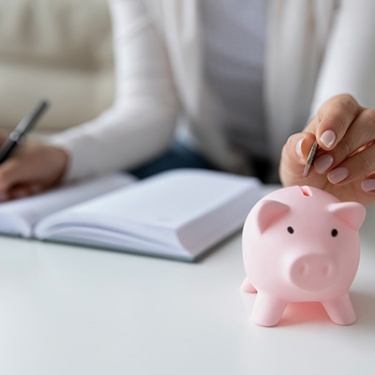Building a Basic Budget — Part 1
 We all have an idea of how much money we bring in each month, but do you often run out of funds before you run out of month? A budget can help you identify spending leaks, develop a realistic saving plan, and reduce stress and anxiety.
We all have an idea of how much money we bring in each month, but do you often run out of funds before you run out of month? A budget can help you identify spending leaks, develop a realistic saving plan, and reduce stress and anxiety.
Specifically, a zero-based budget means that every expected dollar of income has a plan before the month ends. This could be for expenses, paying down debt, savings, charity, entertainment or investment. When you give every dollar a purpose, you can control leaks and ensure you’re maximizing the effectiveness of your total income while also regulating your spending, not failing to set money aside for an emergency fund, retirement, etc.
1. Why you should have a spending plan:
There are a lot of benefits to managing your money instead of letting your money manage you:
- Fewer surprises mean less stress, knowing where your money goes and having savings for an emergency.
- You’ll have a sense of satisfaction in achieving your goals.
- Greater control over your finances provides peace of mind.
Your goals should be as specific as possible. For instance, if you just say, “I want to pay off credit card debt,” you’re less likely to reach your goal than if you are more precise.
2. Set SMART goals:
- Specific — What do you want to accomplish?
- Measurable — How will you determine if you meet the goal?
- Achievable — Inspire motivation, not discouragement.
- Realistic — Can you achieve your goal?
- Time-Oriented — With no deadline, there’s no urgency.
Do you have an emergency fund? Do you want to pay off debt? Do you want to start saving to buy a house?
Your goals should be as specific as possible. For instance, if you just say, “I want to pay off credit card debt,” you’re less likely to reach your goal than if you are more precise: “I will pay off my credit card debt of $1,200 within 12 months by bringing my lunch instead of eating out every day.”
Break down your goal of paying your credit card debt of $1,200 by the month, week, and day. By the month, it’s $100. It would be $25 a week, which breaks down to $3.57 a day. This helps you see that skipping that expensive coffee or brown-bagging your lunch can really have an impact. It does seem a lot easier to save $3.57 a day than $100 a month.
3. Calculate your monthly income:
Keep track of all of your expenses, ideally for three months.
4. Track your expenses:
Figure out what you spend each month and categorize these outlays. There are fixed expenses, like mortgage and car payments; fluctuating expenses, such as utilities, food, gifts, clothing; and periodic expenses, like insurance and taxes.
Identify spending leaks, such as late fees, unread magazine subscriptions, and unused gym memberships. Are you ignoring leaky faucets or missing insulation? Do you get a fancy latte on the way to work most days? These are all things to pay attention to and consider eliminating.
Keep track of all of your expenses, ideally for three months. There are a few ways you could do this:
-
A computer program or app (e.g., Quicken, Mint, etc.): Again, you must have discipline and enter all of your expenses. These programs help because they will automatically assign categories to your expenses and organize your information into graphs and charts to track your spending.
-
Receipt method: Keep all of your receipts. If you don’t get a receipt, write the details on a piece of paper. Keep them in a dedicated box you’ll see every day; that way, it becomes a habit for you to drop in all your receipts.
-
Envelope method: You’ll still need receipts, but go a step further and write categories (such as mortgage/rent, utilities, food, miscellaneous, etc.) on envelopes and place your receipts in them. Be careful not to use your miscellaneous envelope as a catch-all.
-
Use your checkbook or account book: You’ll have to be diligent about entering expenses regularly, including those you use cash for. Be sure to describe them well, too.
At the end of three months, divide each category total by three. That number is your average monthly expense for the given category.
Read the second article in this series, where we put all of this together.
If you wish to comment on this article or have an idea for a topic we should cover, we want to hear from you! Email us at editor@texell.org.







